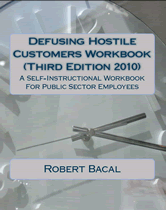
Seven Dynamics of Change
Whatever the kinds of change that people encounter, there are certain patterns of response that occur and re-occur. It is important that change leaders understand some of these patterns, since they are normal outcomes of the change process. Understanding them allows leaders to avoid over-reacting to the behaviours of people who, at times, seem to be reacting in mysterious, non-adaptive ways.
Ken Blanchard, well known management consultant, has described seven dynamics of change designed to help managers better address employee reactions to change. They are worth summarizing here.
People will feel awkward, ill-at-ease and self-conscious
Whenever you ask people to do things differently, you disrupt their habitual ways of doing things. This tends to make people feel awkward or uncomfortable as they struggle to eliminate the old responses and learn the new. Think back to your own experience and you will discover this theme. Whether it be learning to use a computer, the first time picking up your infant, or dealing with a new reporting relationship, recall the self-consciousness that you probably felt. People want to get it right, and fear that they will appear inadequate.
People initially focus on what they have to give up
Even for positive changes such as promotions, or those that result in more autonomy or authority, people will concentrate on what they will be losing. As a change leader you need to acknowledge the loss of the old ways, and not get frustrated at what may seem to be an irrational or tentative response to change.
People will feel alone even if everyone else is going through the same change
Everyone feels (or wants to feel) that their situation is unique and special. Unfortunately, this tends to increase the sense of isolation for people undergoing change. It is important for the change leader to be proactive and gentle in showing that the employee's situation is understood. If employees see YOU as emotionally and practically supportive during the tough times your position will be enhanced and the change will be easier.
People can handle only so much change
On a personal level, people who undergo too much change within too short a time will become dysfunctional, and in some cases may become physically sick. While some changes are beyond our control, it is important not to pile change upon change upon change. While changes such as downsizing bring opportunity to do other positive things, the timing of additional changes is important. If you are contemplating introducing changes (that are under your control), it may be a good idea to bounce your ideas off employees. A good question to ask is "How would you feel if....."
People are at different levels of readiness for change
Some people thrive and change. It's exciting to them. Others don't. It's threatening to them. Understand that any change will have supporters and people who have difficulty adapting. In time many people who resist initially will come onside. Consider that those people who are more ready for the change can influence others who are less ready. Open discussion allows this influence process to occur.
People will be concerned that they don't have enough resources
People perceive that change
takes time and effort, even if it has
the long term effect
of reducing workload. They are correct that
there is a learning time
for most change, and that this may
affect their work.
It is important for change leaders to
acknowledge that this
may occur, and to offer practical support
if possible. In
the downsizing scenario this will be even more
crucial, since resources
themselves are cut. Consider following
the downsizing with a
worksmart process, whereby job tasks are
reviewed to examine whether
they are still necessary.
If you take the pressure off, people will revert to their old behaviour
If people perceive that you are not serious about doing things the new way, they will go back to the old way. Sometimes this ill be in the open, and sometimes this will be covert. While Blanchard uses the word pressure, I prefer to think of it in terms of leadership role. The leader must remind people that there is a new course, and that the new course will remain. Coaching towards the new ways is also important.
Conclusion
It is important for leaders to anticipate and respond to employee concerns and feelings, whether they are expressed in terms of practical issues, or emotional responses. When planning for, and anticipating change, include a detailed reaction analysis. Try to identify the kinds of reactions and questions that employees will have, and prepare your responses. Remember that the success of any change rests with the ability of the leaders to address both the emotional and practical issues, in that order.
1 The seven dynamics of change in bold were taken from an article by Ken Blanchard, and published in The Inside Guide, Oct., 1992. Commentary on each of the principles was written by the Editor of The Public Sector Manager.





